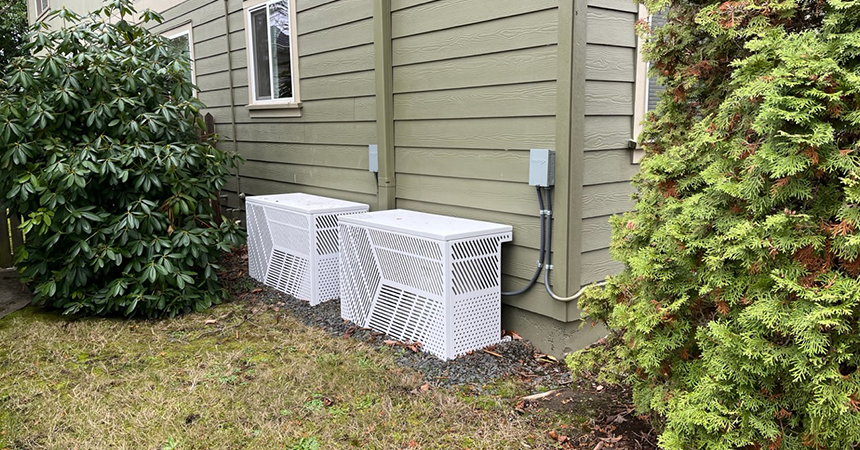Grant Pease and his wife, Sunia, are no strangers to innovation. After successful careers in the tech industry—Grant as a network engineer and Sunia as a mechanical engineer—they’ve applied their technical expertise and visionary ideas to managing rental properties as part of their retirement plan. Their portfolio includes a mix of properties in Corvallis and Portland, including an eightplex near Oregon State University.
Like many multifamily properties built in the 1970s, the eightplex faced challenges with energy efficiency and tenants often dealt with discomfort, especially during extreme weather events.
“Our number one priority is the health, safety, and comfort of our residents,” says Grant, a self-described energy and building enthusiast. “Our second priority is energy savings and lowering our carbon footprint. With heat waves becoming more frequent, the urgency to act was clear. We knew we had to make improvements.”
Partnering with Energy Trust of Oregon
The couple has a long-standing commitment to energy efficiency. Years ago, they designed and built a net zero home for themselves. A net zero home is one that produces as much energy as it consumes annually, typically through renewable energy sources. More recently, after buying their eightplex, they retrofitted it with a new pitched roof and added attic insulation to help cut energy costs. Despite these upgrades, they knew more needed to be done to save energy on the property. “We’ve wanted to do upgrades for years, but it wasn’t financially viable until we could stack rebates and incentives from Energy Trust and other programs.”
With available financial support, the couple installed eight energy-efficient ductless heat pumps (DHPs). They received $14,400 in cash incentives from Energy Trust, along with an additional $25,800 from the Oregon Department of Energy’s rental home heat pump program, covering 84% of the total project cost.
Improving comfort and efficiency
From a tenant standpoint, the upgrades were immediate and impactful. Tenants praised the DHPs for their ease of use and effectiveness in both heating and cooling as well as providing better indoor air quality. “We made sure to communicate how the DHPs work and how they could save them money and improve their comfort. If it’s 105 degrees out and you’ve got a remote, you can figure out how to use it pretty quickly,” says Grant.
Beyond comfort, the DHPs reduced energy consumption significantly providing each tenant with an impressive yearly savings of approximately $210 each on utility bills, totaling nearly $1,700 annually.
“My wife and I would love for people to see what we’ve done and be jazzed about it. When the time comes for more energy efficiency upgrades, we’re always going to check Energy Trust’s website to see what’s available,” says Grant.
Installing ductless heat pumps (DHPs) is just one of many ways multifamily property owners can improve energy efficiency, save money and enhance tenant comfort. To learn more, visit Energy Trust’s incentives page or email multifamily@energytrust.org.

